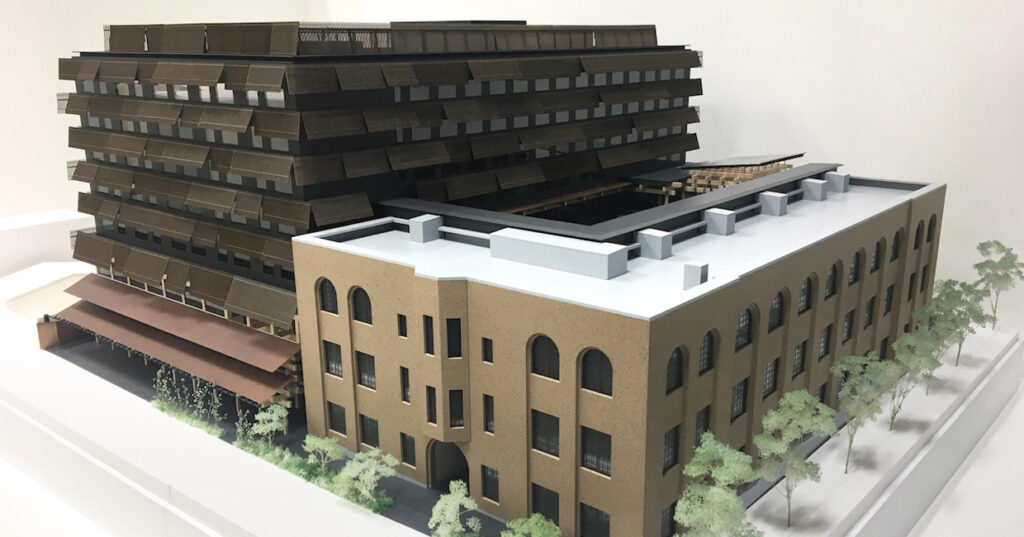The new hotel is part of the redevelopment of the ShinPuhKan scheme, and has been designed in part by famed architect, Kengo Kuma.
Reflecting upon the property’s positioning in an area with a valuable industrial and imperial legacy, Kuma has incorporated elements of this 1920s building, originally built as the Kyoto Central Telephone Office, into the newbuild hotel.
“The thought was to create a hotel that is connected to Kyoto, and open to the surrounding area,” says Kuma. “To begin with, the proposition was to create a dense garden where communities, as well as the past and the present, are connected to this venerable land with its various gardens, which have existed since the Heian period.”
Within the central courtyard, the striking red brick of the property co-exists with Kuma’s wooden grid exterior in a way that recalls traditional Kyoto aesthetics.
Elsewhere, the integrity of Aneyakoji and Higashino-toin road has been preserved through the delicate use of fine louvers and meshes, doubling as environmental devices that gently filter light and wind.
The hotel’s interior is innately connected with the spirit of the local neighbourhood, its history, art, architecture and culture. This is anchored in collaborations with like-hearted artists and craftspeople to create a fresh, energised feel.
“It’s been our long-standing dream to put down roots in Japan,” says Brad Wilson, President of Ace Hotel Group. “We feel incredibly humbled and grateful to work with such well-respected and admirable partners as NTT Urban Development Corporation and Kengo Kuma to make our dreams a reality, creating a space that honours the beauty and history of Kyoto while fostering global connection and cultural innovation.”



